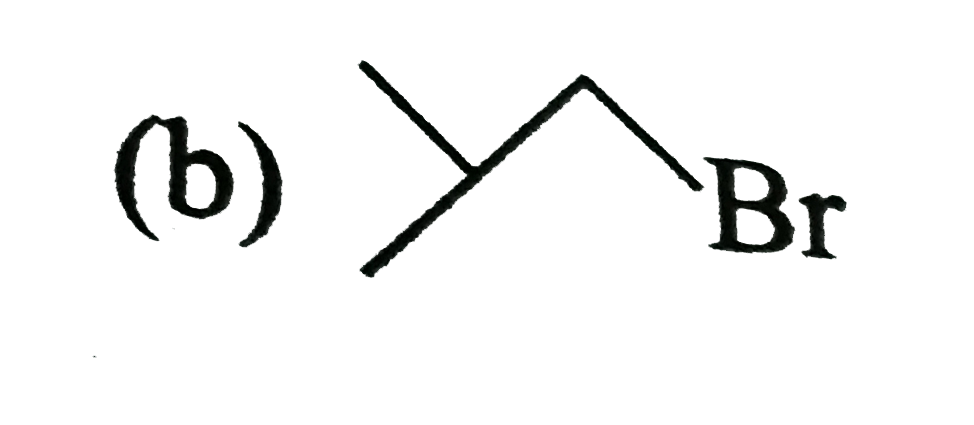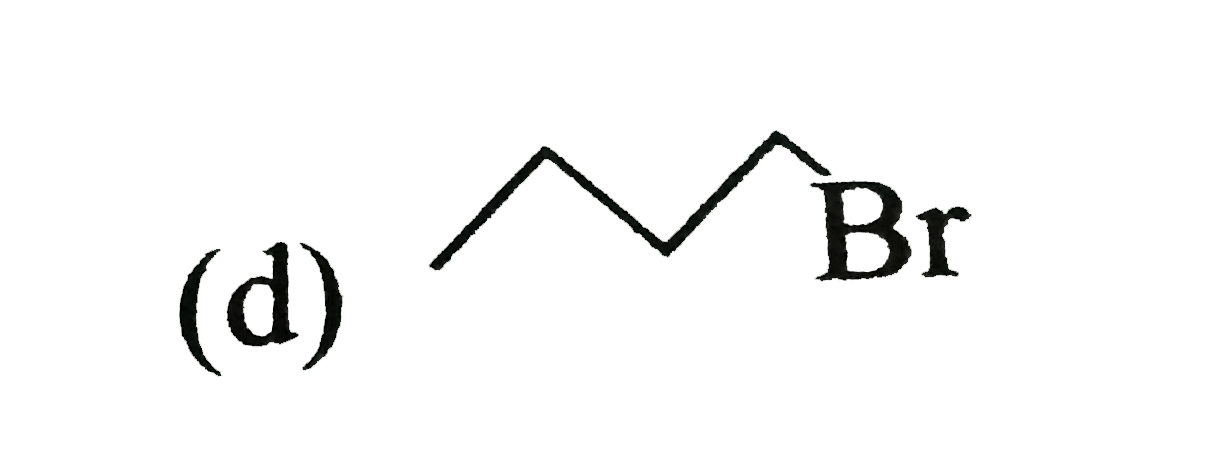What is the chief product obtained
when n-butane is treated with bromine
in the presence of light at 130∘C
CH3−CH2−C∣CH3H−Br
CH3−C∣CH3H−CH2−Br
CH3−CH3∣C∣CH3−Br
CH3−CH2−CH2−CH2−Br
The correct Answer is:A
To determine the chief product obtained when n-butane is treated with bromine in the presence of light at 130°C, we can follow these steps:
Step 1: Understand the Reaction Conditions
- We are dealing with n-butane (C4H10) and bromine (Br2) under photochemical conditions (presence of light) and elevated temperature (130°C).
Hint: Remember that light can initiate radical reactions by breaking bonds.
Step 2: Identify the Mechanism
- The reaction involves a radical substitution mechanism. When bromine is exposed to light, it dissociates into two bromine radicals (Br•).
Hint: Look for how radicals are formed and how they interact with alkanes.
Step 3: Formation of Radicals
- The bromine radicals will abstract hydrogen atoms from n-butane, leading to the formation of carbon radicals. n-butane has two types of hydrogen atoms: primary (attached to the terminal carbons) and secondary (attached to the second carbon).
Hint: Identify the types of carbon in n-butane and the stability of the resulting radicals.
Step 4: Identify Possible Products
- The hydrogen can be removed from either a primary carbon (C1 or C4) or a secondary carbon (C2 or C3).
- If a primary hydrogen is removed, a primary radical is formed (less stable).
- If a secondary hydrogen is removed, a secondary radical is formed (more stable).
Hint: Consider the stability of the radicals formed; secondary radicals are more stable than primary radicals.
Step 5: Determine the Major Product
- The major product will come from the more stable secondary radical. In n-butane, removing a hydrogen from the second carbon (C2) or third carbon (C3) leads to the formation of 2-bromobutane as the major product.
Hint: The stability of the radical influences which product is favored.
Conclusion
- The chief product obtained when n-butane is treated with bromine in the presence of light at 130°C is 2-bromobutane.
Final Answer: The chief product is 2-bromobutane.
- We are dealing with n-butane (C4H10) and bromine (Br2) under photochemical conditions (presence of light) and elevated temperature (130°C).
- The reaction involves a radical substitution mechanism. When bromine is exposed to light, it dissociates into two bromine radicals (Br•).
- The bromine radicals will abstract hydrogen atoms from n-butane, leading to the formation of carbon radicals. n-butane has two types of hydrogen atoms: primary (attached to the terminal carbons) and secondary (attached to the second carbon).
- The hydrogen can be removed from either a primary carbon (C1 or C4) or a secondary carbon (C2 or C3).
- If a primary hydrogen is removed, a primary radical is formed (less stable).
- If a secondary hydrogen is removed, a secondary radical is formed (more stable).
- The major product will come from the more stable secondary radical. In n-butane, removing a hydrogen from the second carbon (C2) or third carbon (C3) leads to the formation of 2-bromobutane as the major product.
- The chief product obtained when n-butane is treated with bromine in the presence of light at 130°C is 2-bromobutane.
Topper's Solved these Questions
- HYDROCARBONBOOK - ERRORLESS CHAPTER - HYDROCARBONEXERCISE - JEE SECTION (More than one choice correct answer)
35 Videos
- HYDROCARBONBOOK - ERRORLESS CHAPTER - HYDROCARBONEXERCISE - JEE SECTION (Reasoning type questions)
4 Videos
- HYDROCARBONBOOK - ERRORLESS CHAPTER - HYDROCARBONEXERCISE - CRITICAL THINKING (Objective questions)
24 Videos
- HALOGEN CONTAINING COMPOUNDBOOK - ERRORLESS CHAPTER - HALOGEN CONTAINING COMPOUNDEXERCISE - Critical Thinking (Jee (Advanced) 2018)
1 Videos
- IONIC EQUILIBRIUMBOOK - ERRORLESS CHAPTER - IONIC EQUILIBRIUMEXERCISE - JS Jee Section (JEE Advanced (Numeric answer type question))
1 Videos
Similar Questions
Knowledge Check
What is the chief product obtained when n−butane is treated with Br2 in the presence of light at 130∘C?
ACH3−CH2−CHBr−CH3B(CH3)2CHCH2BrC(CH3)3CBrDCH3−CH2−CH2−CH2−BrWhat is the chief product obtained when n-butane is treated with Br2 in the presence of light at 130∘C?
A B
B C
C D
D
The major product obtained when - Butane is treated with bromine in the presence of light is
ACH3−CH2−CH2−CH2−BrB C
C D
D
What happen when aniline is treated with bromine ?
View SolutionWhat happens when aniline is treated with Br2 water?
View SolutionWhat are the product obtained when ammonia is reacted with excess of bromine:
View SolutionWhat is the product obtained when chloride reacts with ethyl alcohol in the presence of NaOH ?
View SolutionWhat is the product obtained when chlorine reacts with ethyl alcohol in the presence of NaoH?
View Solution
